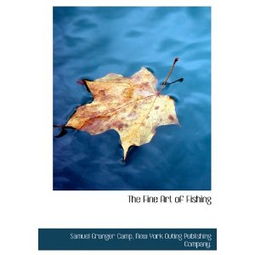Content:
Introduction: Fishing is a timeless activity that has been enjoyed by people of all ages for centuries. Whether you're looking to relax, unwind, or catch your first fish, learning the basics of fishing can be both rewarding and exciting. If you're a beginner and want to get started with this fascinating hobby, here are some essential tips to help you master the art of fishing.
Choose the Right Gear: Before you head out to the water, it's important to have the right equipment. Here's a list of essential gear for beginners:
a. Rod and Reel: Select a rod and reel that are appropriate for the type of fishing you plan to do. For beginners, a spinning rod and reel combo is a great choice.
b. Line: Use monofilament line for beginners, as it's easy to handle and less likely to snap.
c. Hooks: Choose hooks that are suitable for the type of fish you want to catch. For general fishing, a size 6-10 hook should suffice.
d. Lures and Bait: Experiment with different lures and baits to see what works best for the fish you're targeting.
e. Tackle Box: Keep a tackle box with essential items such as pliers, scissors, a knife, and extra line.
Learn the Basics of Casting: Casting is a fundamental skill that you'll need to master. Here's a step-by-step guide to help you get started:
a. Hold the rod with both hands, placing your index finger on the reel's spool.
b. Back the line off the reel by turning the handle clockwise.
c. Swing the rod back and forth, creating a loop in the line.
d. When you reach the desired distance, flick your wrist to release the line.
e. Practice casting in an open area until you're comfortable with the technique.
Understand the Basics of Bait and Lures: Fishing is all about attracting fish with bait or lures. Here are some tips to help you get started:
a. Bait: Use fresh or frozen bait that is known to attract the fish you're targeting. Common baits include worms, crickets, and minnows.
b. Lures: Lures mimic the movement of real fish, attracting curious fish to bite. Experiment with different types of lures, such as spinnerbaits, jigs, and crankbaits.
c. Color and Size: Choose bait and lures that match the natural colors and sizes of the fish you're trying to catch.
Learn to Read the Water: Understanding the water you're fishing in is crucial for success. Here are some tips to help you read the water:
a. Look for areas with structure, such as rocks, logs, or weeds, as these can provide hiding spots for fish.
b. Observe the water's surface for signs of fish activity, such as bubbles, ripples, or splashes.
c. Pay attention to the current and wind, as they can affect fish behavior.
Patience is Key: Fishing requires patience, as it's not always about catching fish right away. Here are some tips to help you stay patient:
a. Set realistic goals for your fishing trip, understanding that catching fish can take time.
b. Take breaks and enjoy the surroundings, whether it's the sound of the water, the scenery, or a good book.
c. Be open to learning from your experiences, and don't get discouraged by a slow day.

Safety First: Always prioritize safety when fishing. Here are some tips to help you stay safe:
a. Check the weather forecast before heading out and dress appropriately for the conditions.
b. Tell someone where you're going and when you plan to return.
c. Wear a life jacket if you're fishing from a boat or in a dangerous area.
Conclusion: Learning the art of fishing can be a fun and rewarding experience for beginners. By following these tips, you'll be well on your way to mastering the basics of fishing. Remember to practice patience, stay safe, and enjoy the beautiful moments you'll create on the water. Happy fishing!












